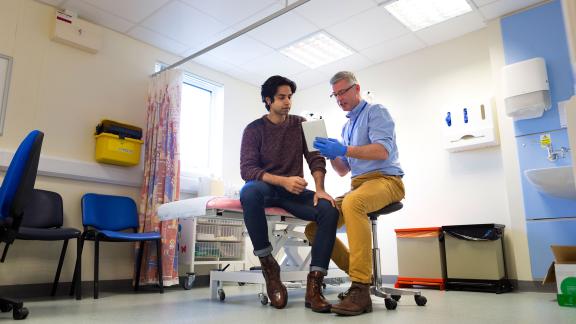Latest performance figures show glimmers of improvement, but demand increasing

The latest monthly performance statistics for the NHS in Wales show that:
-
On average, 120 immediately life-threatening ‘red’ calls were made per day in April to the Welsh Ambulance service, with more than 100 red calls made each day for the eleventh month in a row.
-
There was a slight decrease in the average daily attendances to emergency departments on the previous month, and a slight improvement against the targets, however the average time spent in emergency departments was the second longest on record.
-
For the first time waiting lists have now increased to over 700,000. However, March saw the highest number of patient pathways waiting for treatment closed since the start of the pandemic and the total activity for cancer services was the highest since data collection began in December 2020.
In response, Darren Hughes, director of the Welsh NHS Confederation, said:
“It's encouraging to see some glimmers of improvement, but the NHS in Wales continues to be experiencing extraordinarily difficult levels of demand across all parts of the system.
“Today’s statistics show the NHS is working hard to make sure patients are getting the help and care they need, with improvements in many patient pathways and notably the highest ever total activity in cancer care since data collection began. Unfortunately, with immediate demand across the system still so high, it’s very difficult to make any significant dent in the waiting lists, which have now reached over 700,000 for the first time ever.
“NHS services are doing all they can to deliver care but are doing so in increasingly challenging circumstances. Life-threatening (red) calls to 999 continue to grow in proportion, undoubtedly contributing to the lengthy waits experienced in A&Es which were on average the second longest on record.
“These ‘front door’ issues are the most visible part of the problem, but largely unseen is the significant issue with patient flow, with the strain on all parts of the system, including in primary care, community services and social care, all contributing factors. With hospital beds at over 90% occupancy and around 1000 patients well enough to be discharged from hospital, we know that without directly addressing the long-standing issues in social care, the system will continue to struggle under this enormous pressure.
“We welcome the progress that has been made but health leaders know there is still considerable work to be done to recover from the pandemic and implement a sustainable health and care system that truly meets the needs of the people of Wales.”



